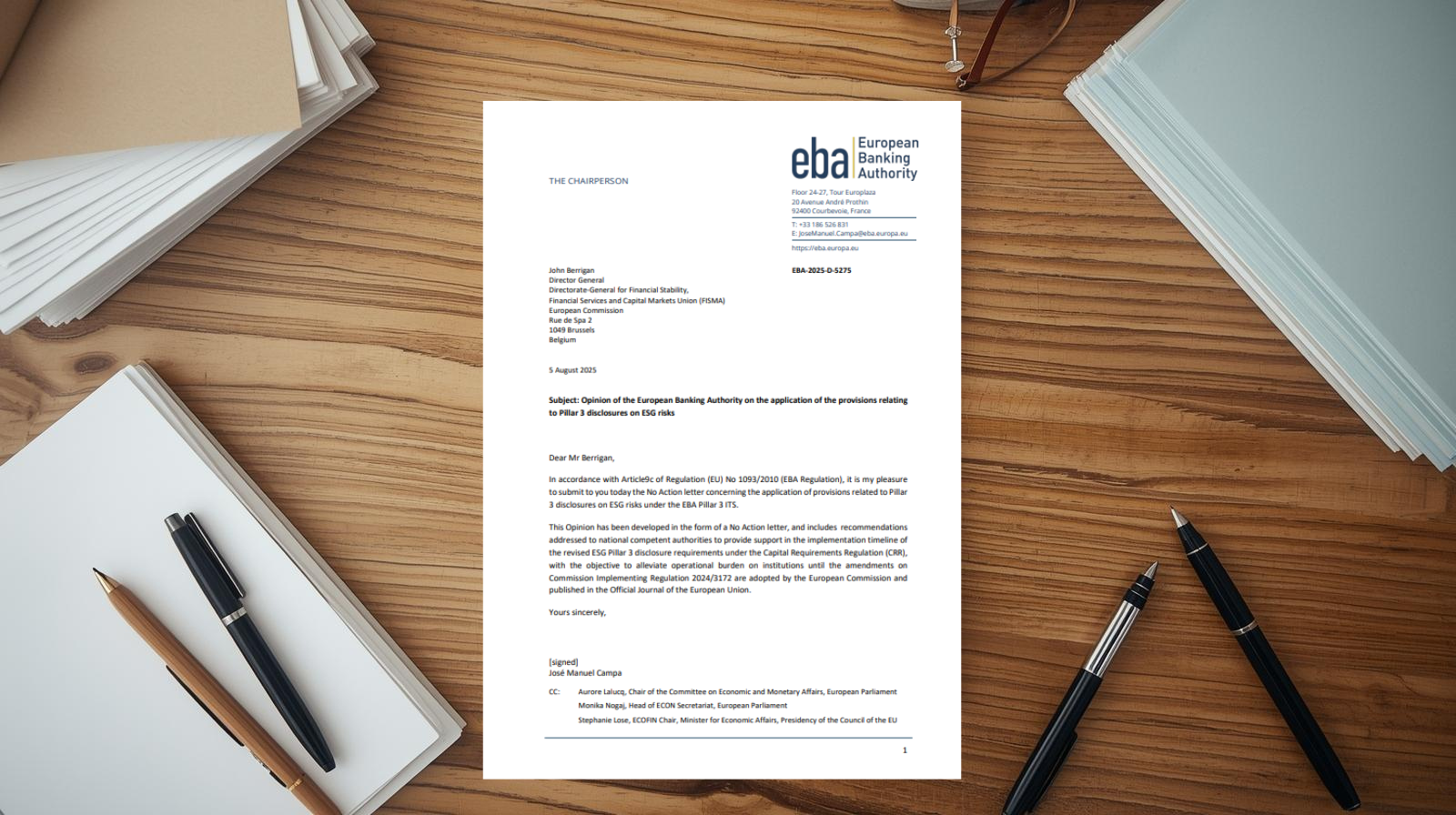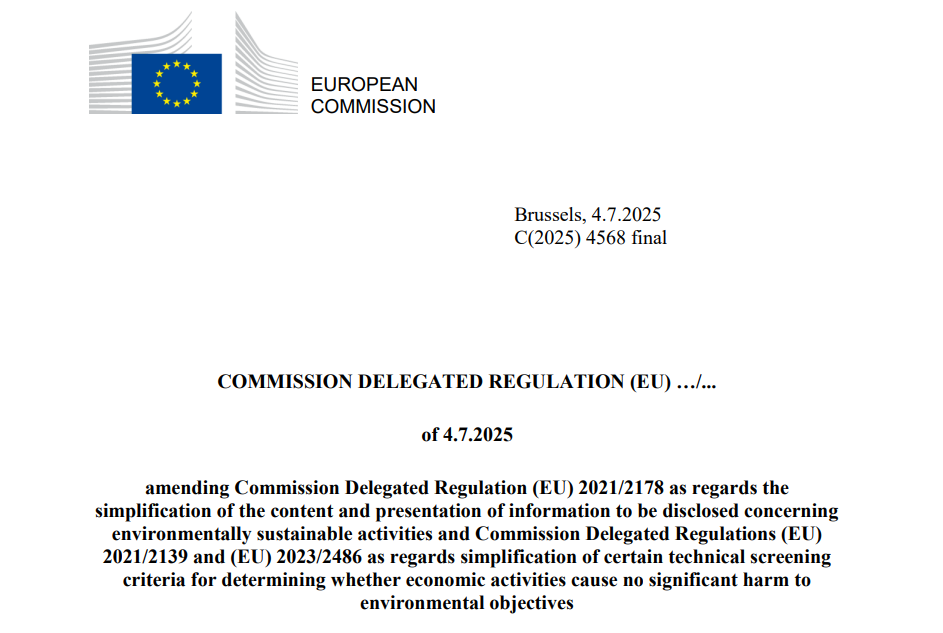EBA issues no-action letter on ESG disclosures and updates risk dashboard
As sustainability-related disclosure requirements continue to evolve across the EU financial sector, regulatory institutions are adjusting their guidance to support smooth implementation.

Recently, the European Banking Authority (EBA) issued a no-action letter addressing the application of ESG disclosure obligations under the Pillar 3 framework. Simultaneously, the EBA released an updated ESG risk dashboard reflecting data as of December 2024. These steps are intended to provide regulatory clarity during a complex transitional phase in sustainability reporting for EU institutions.
Legal background and regulatory context
EBA’s no-action letter aims to address legal and operational uncertainties linked to the evolving ESG disclosure framework, in light of the proposed amendments under the European Commission’s Omnibus legislative package on sustainability reporting.
The no-action letter is grounded in Article 9c of Regulation (EU) No 1093/2010, which empowers the EBA to issue such communications when the application of a relevant legislative act is likely to raise significant issues. This includes cases where provisions may conflict with another act or where, based on available information, their application could adversely affect market confidence, investor protection, or financial stability.
This action follows the introduction of new ESG disclosure requirements under CRR3 (Regulation (EU) 2024/1624), effective from 1 January 2025, and aligns with the ongoing revision of the Implementing Technical Standards (ITS) on Pillar 3 ESG disclosures. While ESG reporting obligations under Article 449a CRR initially applied only to large listed institutions, CRR3 expands the scope to all institutions. In parallel, Commission Implementing Regulation (EU) 2024/3172 adds further technical requirements. Together, these developments have generated legal and operational uncertainty, particularly concerning specific templates and the timing of their enforceability during the transition.
Scope and content of the no-action letter
The EBA clarifies that, until the amended ITS enters into force, competent authorities are expected not to prioritise supervisory or enforcement actions related to several ESG disclosure templates. Specifically, this applies to templates EU 6 to EU 10 and selected columns in Templates 1 and 4. The same approach is recommended regarding the supervisory collection of these templates, as established in EBA Decision EBA/DC/498.
The no-action letter reflects proposals outlined in the EBA’s May 2025 consultation paper to amend the ITS, further demonstrating the Authority’s intent to support a coherent and legally sound transition to revised disclosure practices.
ESG risk dashboard: Key takeaways
Alongside the letter, the EBA published an updated ESG risk dashboard incorporating year-end 2024 data. The current risk landscape across EU/EEA institutions remains broadly stable. This reflects the structural nature of climate and environmental risks and the gradual reallocation of bank portfolios.
The EBA indicates that future dashboard editions will be adjusted to reflect the revised ITS and align with the supervisory expectations communicated through the no-action letter. The dashboard remains a key monitoring tool in the evolving ESG risk environment, and its methodology will evolve in parallel with reporting standards.
Conclusion
The EBA’s approach reflects a balance between regulatory ambition and operational realism. By issuing a no-action letter and adapting its supervisory tools, the Authority provides institutions with time to adjust, while maintaining momentum in enhancing transparency on ESG risks. The evolving standards under Pillar 3 require strategic planning and sustained investment in ESG data infrastructure. Institutions that use the current transition wisely will be better positioned for full compliance in the next reporting cycle.



